Mount Jinggangshan is not only the cradle of the Chinese Revolution but also a tourist attraction that integrates natural scenery, cultural landscapes, and red culture. With its unique geomorphology and climate conditions, Jinggangshan is also a sacred place for the Chinese revolution. In 1927, the Communist Party of China established the first rural revolutionary base in Jinggangshan. There are over 100 well-preserved revolutionary relics in this area, 26 of which have been listed as national cultural relics protection units, serving as witnesses to the history of the Chinese Revolution.
Jinggangshan is also a scenic spot with beautiful natural scenery, boasting numerous natural and cultural landscapes. For instance, Longtan Falls is renowned for its numerous waterfalls, waterfalls, and beautiful shapes. Huangyangjie is a scenic spot that combines cultural and natural landscapes, offering breathtaking views of the entire Jinggangshan. Ciping, the core scenic area of Jinggangshan, is home to numerous red tourism attractions such as museums and martyrs’ cemeteries. Visitors to Jinggangshan can not only appreciate the beauty of natural scenery but also experience the richness of red culture. The scenic area also organizes various activities, such as singing red songs, staged performances, and displays of intangible cultural heritage, allowing tourists to gain a deeper understanding of Jinggangshan's history and culture while enjoying their visit.
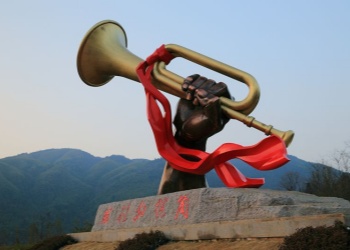
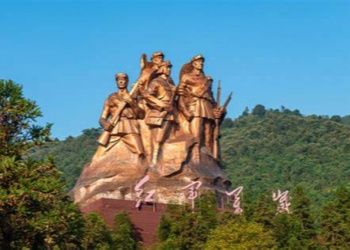
Main Attractions in Jinggang Mountain
Jinggangshan Museum
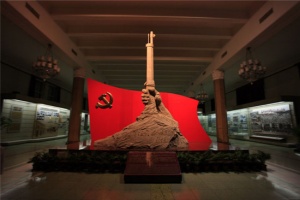 The Jinggangshan Museum
The Jinggangshan Museum
The Jinggangshan Museum is a museum that carries a rich revolutionary history and cultural connotation. As the first local revolutionary history museum in China, it is not only a significant window for displaying the revolutionary history of Jinggangshan to the outside world but also a significant front for inheriting and promoting the spirit of Jinggangshan. The museum's collection is rich in content, covering precious cultural relics, documentary materials, and historical photos from the period of the revolutionary struggle in Jinggangshan. This includes over 30,000 cultural relics, more than 20,000 precious documentary materials, and historical photos, as well as over a thousand precious ink paintings by party and state leaders, famous painters and calligraphers, and well-known figures from all walks of life. In addition, the museum also preserves hundreds of film and television materials of party and state leaders such as Mao Zedong and Zhu De revisiting Jinggangshan, presenting a vivid and authentic picture of the revolutionary history of Jinggangshan to visitors.
The Old Residence in Ciping
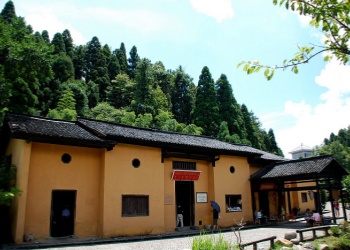 The Old Residence in Ciping
The Old Residence in Ciping
The Old Residence in Ciping is an important site that carries the rich history of Comrade Mao Zedong and the Chinese Revolution. It was the main residence and workplace of Comrade Mao Zedong during the period after the Autumn Harvest Uprising when he led his troops to Jinggangshan, witnessing a crucial stage of the Chinese Revolution and Comrade Mao's exceptional leadership. The furnishings in the old residence are simple and austere, with beds, tables, and chairs belonging to the landlord's family. A lantern, an inkstone, and a writing brush were all the essentials Comrade Mao needed for his evening work. Despite the difficult conditions, his perseverance and selfless dedication deeply infected everyone around him. The Old Residence in Ciping also serves as a witness to the shared life and work of Comrade Mao Zedong and Comrade He Zizhen during the struggle in Jinggangshan. They supported each other, faced difficulties and challenges together, and demonstrated the deep bond of revolutionary companionship.
Huangyangjie
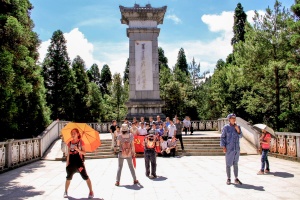 The Huangyangjie
The Huangyangjie
Huangyangjie has an altitude of 1,343 meters. It is a strategic pass connecting Maoping to Jinggangshan. With peaks resembling swords, cliffs, steep mountains on one side, and abysses on the other, surrounded by undulating peaks, its terrain is extremely precipitous. Therefore, some people also call Huangyangjie "Wangyangjie" or "Wangyanggang". To commemorate the great victory of the Huangyangjie Defensive Battle, the people of Jinggangshan built a monument in Huangyangjie in 1960, which was rebuilt in 1965. The front of the monument features Mao Zedong's handwriting of "Xijiang Yue · Jinggangshan," while the back is inscribed with Zhu De's inscription, "Monument to Commemorate the Victory of the Huangyangjie Defensive Battle." This monument is not only a witness to history but also an important place for people to commemorate revolutionary martyrs and promote revolutionary spirit.
Longtan Waterfall
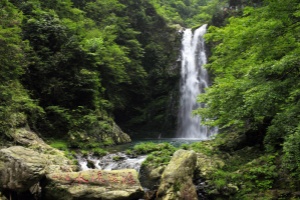 The Longtan Waterfall
The Longtan Waterfall
The Longtan Waterfall in Jinggangshan is renowned for its numerous waterfalls, large drop heights, and beautiful forms, earning the reputation of "Five Pools and Eighteen Waterfalls." Among them, the waterfall in Biyu Pool has a drop height of 67 meters, with deafening water sounds and misty water vapor. The waterfall in Zhenzhu Pool has a drop height of over 30 meters, with a crisp sound and a blue surface. The waterfall shatters into countless sparkling water droplets in midair, resembling pearls falling onto a jade plate. Xiannu Pool is the most beautifully shaped among the five pools. Its waterfall has a drop height of over 40 meters, with an open and deep surface, and extremely distinct lines and contours, resembling a dancing fairy clad in a robe and skirt. While admiring the waterfalls, tourists can also experience the unique subtropical monsoon climate of Jinggangshan, with distinct seasons, abundant rainfall, and moderate average temperatures. In addition, the Ciping area where the Longtan Waterfall Group is located, due to its altitude and the terrain surrounded by mountains, has the climatic characteristics of long winters, short summers, early autumns, and late springs, providing favorable natural conditions for the formation and preservation of the waterfalls.
Travel Tips
· It is crucial to have advanced knowledge of the transportation, hotels, scenic area opening hours, and ticket reservation status at your destination. The transportation in the Jinggangshan area is relatively convenient, but traffic congestion may occur during peak tourist seasons. Therefore, it is recommended to plan your itinerary ahead of time, and try to avoid peak hours. At the same time, reserving hotels and tickets in advance can prevent embarrassing situations such as finding no suitable accommodation or being unable to enter the scenic area on arrival.
· When visiting scenic areas, it is imperative to comply with fire safety regulations. The Jinggangshan area is densely forested, making fire prevention particularly important. Tourists should strictly abide by fire prevention regulations during outdoor travel, refraining from smoking, barbecuing, or using open flames in areas with flammable materials or with fire prevention warnings. Additionally, when visiting revolutionary sites and cultural venues, it is necessary to adhere to relevant safety management regulations and follow the guidance and instructions of the staff.
· During your travel in Jinggangshan, it is also necessary to pay attention to flood season safety. Due to the complex terrain and changeable climate in the Jinggangshan area, tourists should closely monitor the weather conditions of the areas they pass through and their destinations, especially the warning information issued by meteorological departments, to avoid various natural disaster risks in advance. When self-driving, it is advisable to observe road conditions, drive cautiously, and avoid playing or camping in low-lying areas or flood discharge ditches when passing through mountainous or river valley regions.
· Besides safety issues, tasting local cuisine is also a great pleasure for traveling. The characteristic foods in the Jinggangshan area, such as red rice, pumpkin soup, and stir-fried smoked bamboo shoots with meat, are all delicious dishes not to be missed. When tasting local cuisine, it is recommended to choose restaurants with good hygiene conditions to avoid food poisoning and other food safety issues.
· The hotel accommodation conditions in the Jinggangshan area are relatively complete, and tourists can choose suitable hotels based on their budgets and needs. When booking hotels, it is advisable to check the reviews and ratings of the hotels to ensure the comfort and safety of your accommodation.




































